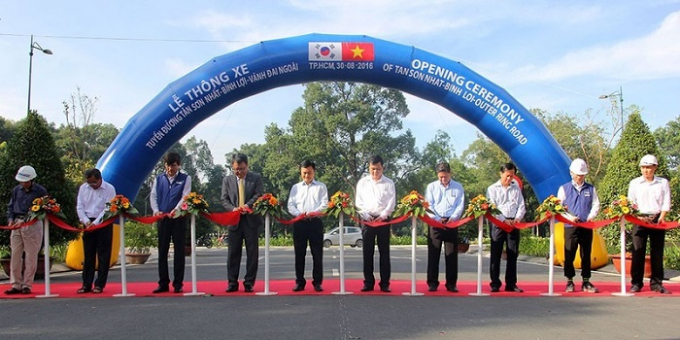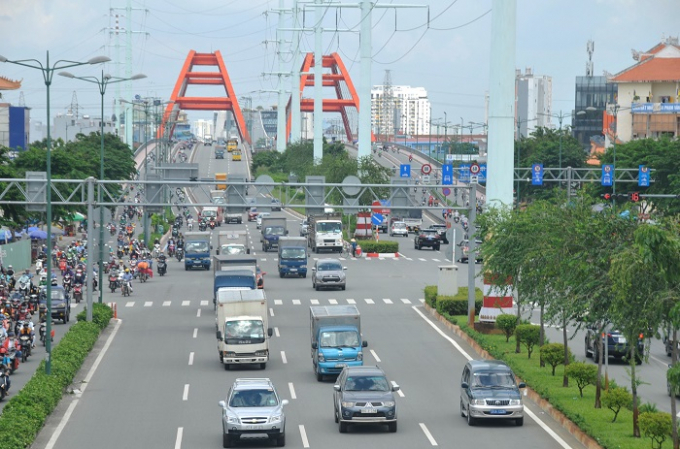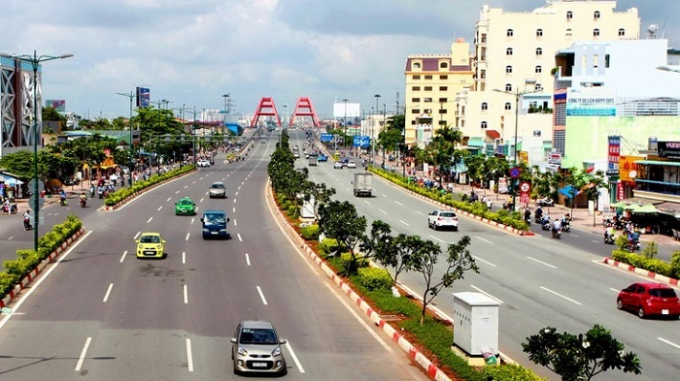- At a Glance
-
Project
Tan Son Nhat - Binh Loi - Outer Ring Road Project
-
Total investment
340 million USD
-
Client
GS Engineering & Construction
-
Works
Taking minor investment shares, application for investment license & construction permit, provide construction supervision consultancy, project management services.
-
Implementation time
2021
This outer ring road is invested under the form of BT contract (Building – Transfer Contract) to relieve traffic from Truong Son intersection (Tan Son Nhat Airport) to Nguyen Thai Son intersection, Binh Loi Bridge and is ended at Linh Xuan intersection with total length of 13.6km.
PROJECT - SERVICE
The construction project of the Tan Son Nhat - Binh Loi - Outer Ring Road is invested in the form of BT (Build - Transfer Contract) of GS Group to relieve traffic from Truong Son intersection. Tan Son Nhat Airport) to Nguyen Thai Son intersection, Binh Loi Bridge and ends at Linh Xuan intersection with a total length of 13.6km.

Project overview
- Project name: Tan Son Nhat - Binh Loi - Outer Ring Road Project
- Scale: 13,657km
- Starting point: Truong Son intersection - Tan Son Nhat airport gate (Tan Binh district)
- Ending point: Linh Xuan intersection, National Highway 1A (Thu Duc district)
- Total investment capital: More than 340 million USD
- Starting time: June 9, 2008
- Completion time: August 2016

Route design
The project to build this Tan Son Nhat - Binh Loi - Outer ring road starts at Tan Son Nhat airport, goes through Nguyen Thai Son intersection, Binh Loi bridge, follows Kha Van Can route and ends at Linh Xuan intersection (Linh Xuan overpass), National Highway 1A (Thu Duc district). This route has a cross section of 60m wide (12 lanes), with a total volume of 42,000 vehicles/day and night. Specifically:
+ The road from Tan Son Nhat airport to Nguyen Thai Son crossroads is divided into 2 branches following Hong Ha and Bach Dang streets, each branch has a width of 20m (3 lanes designed for one-way traffic).
This route, when completed, aims to make the process of transporting passengers from the airport to the ring road system convenient and quick. In which, Hong Ha road (20m wide with 3 lanes), and Bach Dang road (20m wide road with 6 lanes).
+ The section from Nguyen Thai Son intersection to Go Dua intersection has a width of 60m for 12 lanes. The section from Go Dua intersection to National Highway 1A (Thu Duc) has a width of 30m for 6 lanes.
+ The connection between the inner ring (located 300m from Go Dua bridge) and the outer ring (national highway 1A) is 30m wide (6 lanes). This section of road has the function of contributing to connecting from Ring 1 to National Highway 1A to the North, approaching Binh Duong Province, Dong Nai Province, etc.
According to the plan, in the future, the point 300m away from Go Dua bridge will form a five - branch intersection: one branch from Tan Son Nhat airport, one branch goes to Binh Thai intersection through Phu My bridge, one branch connects to the intersection of Go Dau traffic on National Highway 1A, and one branch is the existing road Kha Van Can. Therefore, when coming to this area, the traffic demand and volume are reduced, so the government only designed a 30m road.

Meaning of the project
After completion, the project to build a road connecting Tan Son Nhat airport - Binh Loi - Outer Ring Road contributes to solving difficulties in road traffic for provinces and cities. Specifically:
- To facilitate people from the provinces of Binh Duong, Binh Phuoc and Dong Nai to move to Tan Son Nhat airport more easily and quickly.
- After being put into operation and use, this route contributes to reducing traffic pressure on Truong Son route. Therefore, traffic jams and congestion at the gateway area of Tan Son Nhat airport will also be significantly reduced.
- The traffic congestion in the inner city and the northeastern gateway of Ho Chi Minh City has been resolved, creating a driving force for economic development, urban embellishment and environmental improvement of the city.
- According to calculations by the Department of Transport of Ho Chi Minh City, other routes such as Kha Van Can, Dinh Bo Linh and Phan Van Tri will reduce congestion significantly, specifically by 50% compared to the time before this route is in operation.


